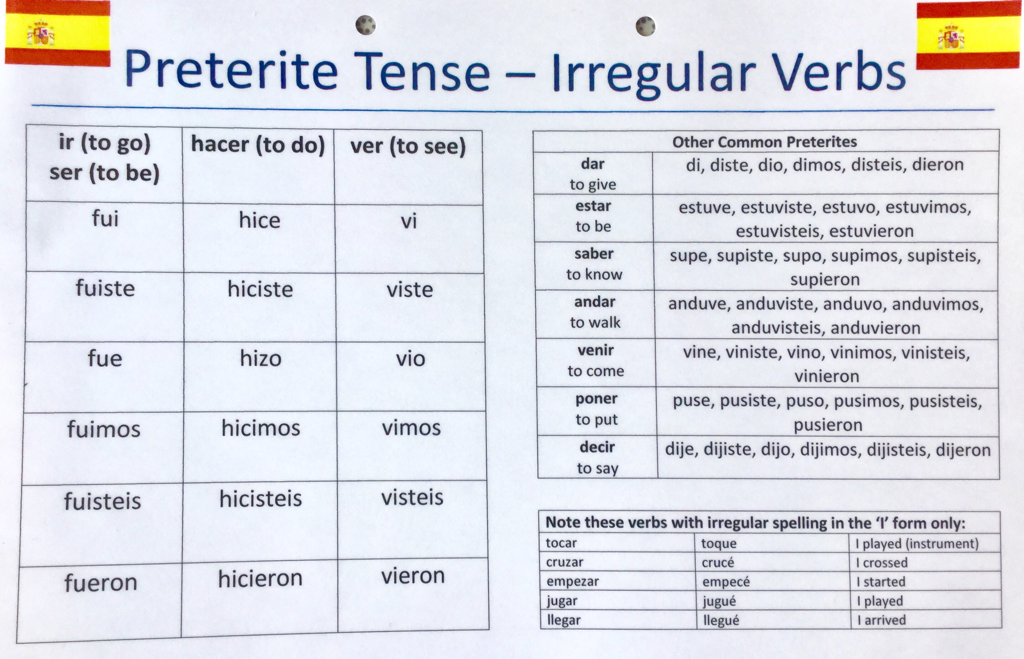

The imperfect tells us in general when an action took place.The er verbs use the exact same endings in the imperfect tense as the ir verbs, so. Notice that all imperfect tense forms of er and ir verbs have a written accent mark on the letter i. For every other er and ir verb, use the endings in Table 4. The preterite tells us specifically when an action took place. There are only three irregular verbs in the imperfect tense: ser, ir, and ver.You have now learned the basic difference between the preterite and the imperfect: In very general terms, the preterite tense is used to refer to a single event that happened at a specific point of time or had a specific duration in the past. You need to get the feeling of an ongoing action, rather than an action in a specific point in time. To use the past imperfect tense, you need to think about a continuous action that happened for a period of time (although the period of time is not defined). Use of the imperfect tense implies that the past action did not have a definite beginning or a definite end. The Past Tense in Spanish: EL IMPERFECTO. Generally speaking, the imperfect is used for actions in the past that are not seen as completed. It is important to realize that the beginning and the end may not always be clearly stated. Use of the preterite tense implies that the past action had a definite beginning and definite end. Generally speaking, the preterite is used for actions in the past that are seen as completed. To conjugate regular -ar verbs in the imperfect, simply drop the ending (-ar) and add one of the following:Ĭompare the verb “hablar” conjugated in the preterite and the imperfect. To conjugate regular -ar verbs in the preterite, simply drop the ending (-ar) and add one of the following: You will also learn the basic difference between the preterite and the imperfect, so that you can begin using them correctly. In this lesson, you will learn to conjugate regular -ar verbs in the preterite and the imperfect. Most verbs can be put into either tense, depending upon the meaning. Spanish has two past tenses: preterite and imperfect.

Subjunctive VIII: Actions not yet completed

Subjunctive III: Verbs that change orthographically Subjunctive II: Conjugating regular and stem-changing verbs


 0 kommentar(er)
0 kommentar(er)
